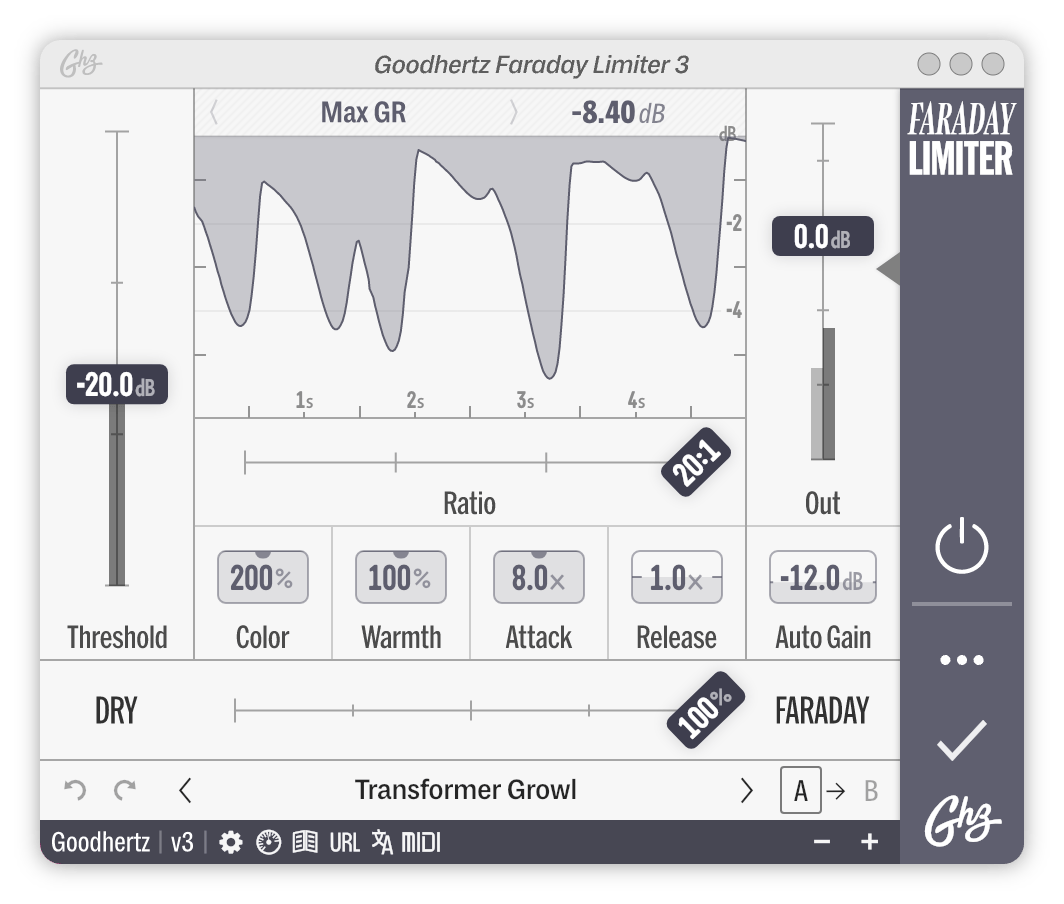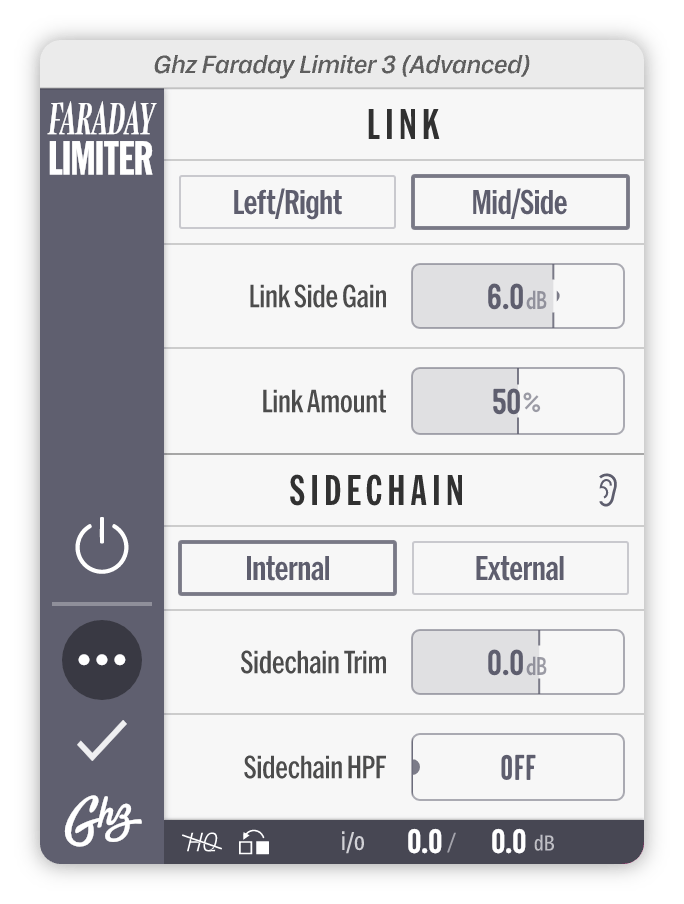Advanced Controls
Faraday Limiter has 1 page of advanced controls. Click on the image below to see the advanced page in detail. You can also read about the advanced controls in the plugin manual.
Faraday Limiter is the sound of iron: colorful dynamics with warm, tape-like saturations.
“Faraday Limiter is super-useful and all about vibe! I don’t think of it as a limiter but more as tone-sculpting tool. Highly recommended!”
— Barry Rudolph, Mix Magazine
- Big, analog-modeled transformer sound
- “Color” and “Warmth” controls for extended timbral shaping
- Advanced stereo linking: variable L/R or M/S linking
- Adjustable ratio: [2:1, 4:1, 8:1, 20:1]
- Gain reduction history meter
Most modern digital limiters are designed to be sonically neutral, with maximum transparency and minimal coloration. In other words, they’re created to do one job (limit a signal’s level) without changing the overall sound too much or imparting any specific sonic signature. Inevitably, though, digital peak limiters do have a sound of their own — especially when pushed hard — and, when exposed, that sound can be truly awful: harsh, brittle high end; squashed transients; & thin or mangled low end. Rather than build another “transparent” brickwall limiter, we thought we’d make something different: something dynamic, colorful, and inspiring; something you could use for more than just pure loudness.
Named after the inventor of the electrical transformer, Faraday Limiter’s analog-modeled input/output transformers are responsible for its beefy, harmonically-rich sound. The limiter circuit is smooth yet lively — it can pump faster and further than any limiter we’ve ever heard while retaining its characteristic punch and warmth. Faraday Limiter sounds great on buses, individual instruments, vocals, dialog, etc. and allows for a level of timbral shaping and tonal coloration that can’t be achieved with any other dynamics processor.
Faraday Limiter in use
“Cars Two” (Trem Ctrl → Vulf Compressor → Faraday Limiter)
Manipulating the opening drum sample of Vulfpeck’s “Cars Two” with a chain of very intense Goodhertz plugin processing.



